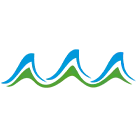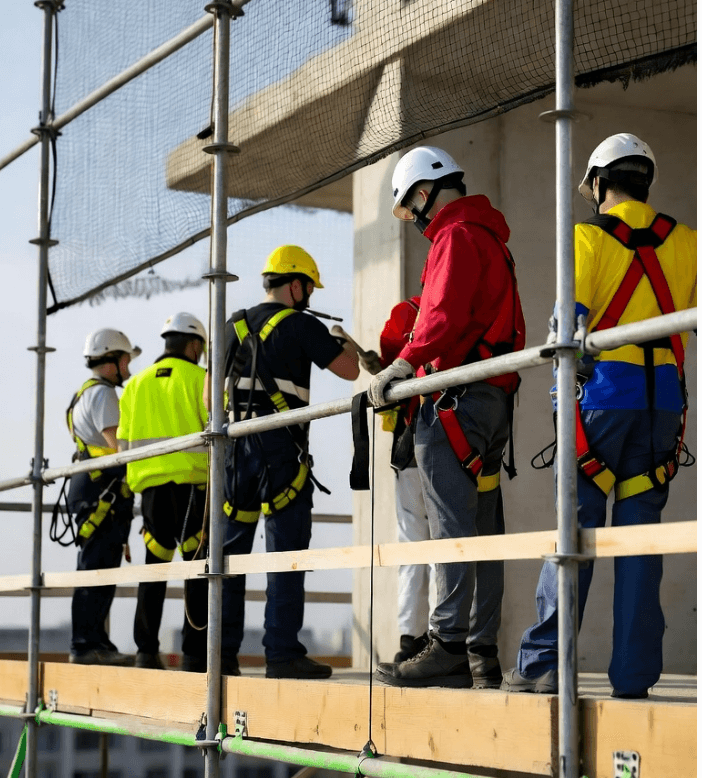Falls remain one of the deadliest risks in the construction and maintenance industries. For people who work on rooftops, wind turbines, scaffolding, or bridges, every step carries weight—literally and figuratively. Many workers wear harnesses, helmets, and safety shoes, yet accidents still happen.
This problem has been around for decades. What is changing today is how technology, especially millimeter-wave radar, helps reduce those risks and transform how companies think about safety.
The Hidden Numbers Behind Work-at-Height Accidents
Every year, thousands of workers around the world fall from heights. The European Agency for Safety and Health at Work reports that nearly one-third of fatal accidents in construction involve falls. In Spain, between 2014 and 2018, there were about 19 deaths per year related to falls in construction sites. Almost half of these accidents happened at less than four meters above ground—proving that even short falls can be deadly.
Most people think danger begins at great heights. The truth is different. A fall from three meters can be just as serious as one from ten, depending on the surface, position, and reaction time. That’s why many countries define “work at height” as any activity carried out two meters or more above the ground.
These jobs include a wide range of tasks: painting façades, repairing roofs, pruning trees, cleaning towers, or installing antennas. Even short “quick tasks” like changing a sign or fixing a light pole can turn fatal if safety rules are ignored.
Why Accidents Still Happen
Regulations are clear. The Spanish Law 31/1995 on Occupational Risk Prevention, like OSHA standards in the United States, states that employers must ensure safety before any task begins. Workers must receive training, use certified equipment, and plan rescue procedures in advance.
Still, accidents persist. Some companies rely on checklists rather than real risk evaluation. Supervisors may not see the danger in time. In many cases, the tools that could have saved a life simply weren’t in place.
Human error plays a role too—fatigue, distraction, or poor visibility. Traditional monitoring systems, like cameras or manual inspections, have limits. Cameras can fail in dust, rain, or darkness. People may not notice subtle signs that a worker is about to lose balance. This is where radar technology enters the picture.
Millimeter-Wave Radar: A New Layer of Protection
Millimeter-wave (mmWave) radar is a sensing technology that measures distance, speed, and movement using radio waves at extremely high frequencies—typically 60 to 77 GHz. Unlike cameras, radar doesn’t need light and works reliably in fog, dust, and heat.
For safety at height, this means radar can detect the motion of a worker even when visibility is poor. It tracks body movement patterns and can distinguish between normal motion and signs of a fall or slip.
When installed on platforms, cranes, or towers, radar continuously scans the workspace. If it detects a sudden drop or abnormal posture, it can trigger alarms or automatically stop lifting machinery. The reaction happens within milliseconds—faster than any human observer.
Privacy-Friendly and Non-Intrusive
One major advantage is privacy. Cameras record images, which raises concerns about personal data. Radar, in contrast, doesn’t capture faces or details—it only measures motion. This makes it ideal for safety systems that comply with data protection laws such as the GDPR.
Data-Driven Prevention
Radar systems also collect long-term data that helps safety managers understand patterns: which zones have higher risk, when workers are most fatigued, or how wind affects stability. This information supports proactive planning, reducing accidents before they happen.
Companies like Linpowave have developed industrial-grade radar sensors that integrate into IoT platforms. These radars can monitor multiple workers simultaneously, covering distances from 0.2 to over 300 meters, and still maintain centimeter-level precision.
How Radar Integrates with Modern Worksites
Modern construction sites and wind farms already use various smart tools—wearables, drones, and digital twins. Millimeter-wave radar fits naturally into this ecosystem.
-
With Drones: Radar helps drones inspect tall structures like transmission towers or bridges without risking human lives.
-
With Wearables: Smart helmets or belts equipped with radar or connected sensors can send real-time alerts when a worker moves unsafely.
-
With Digital Twins: Radar feeds motion data into 3D models, giving managers a live overview of worker positions and environmental conditions.
This integration turns safety from a static checklist into a living system that watches, learns, and adapts.
Real Benefits Beyond Compliance
Radar improves more than safety numbers—it builds trust. A company that invests in advanced safety technology shows that it values its people. That reputation attracts skilled workers and responsible partners.
There’s also a clear economic benefit. Studies by the U.S. National Safety Council show that every dollar spent on prevention saves at least twice that amount in reduced compensation costs and downtime. Radar adds predictive value by spotting unsafe conditions before they lead to incidents.
For industries like offshore energy or large-scale infrastructure, where rescue operations are complex, this predictive capacity can be the difference between life and death.
The Future of Safety Culture
Technology alone doesn’t solve everything. A radar sensor can alert you, but it can’t replace awareness or teamwork. For these systems to truly work, companies must build a culture of safety—where workers trust the tools and management acts on the data.
Training should include how radar works, how to interpret warnings, and how to respond to alerts. When combined with proper planning, barriers, and fall-arrest systems, radar adds a final protective layer that saves lives quietly and efficiently.
In the end, it’s not about replacing people—it’s about giving them a smarter safety net.
Frequently Asked Questions (FAQ)
1. What makes millimeter-wave radar special for work-at-height safety?
It detects body motion and distance without needing light or visibility. It works in fog, dust, or darkness, and reacts instantly when a fall begins.
2. How does radar compare to cameras or LiDAR?
Radar is more reliable in harsh environments and does not invade privacy. Cameras capture visuals; radar captures motion. LiDAR can be more accurate for mapping but is less effective through obstacles or rain.
3. Can radar be integrated with other systems?
Yes. It works with IoT dashboards, drones, wearables, and digital twin platforms. Radar data can be used alongside environmental sensors or AI algorithms.
4. Are there examples of radar being used today?
Yes. Wind energy operators and large construction firms in Europe and Asia use mmWave radar to monitor towers and platforms. Some systems built by Linpowave are already in pilot programs for remote worksite monitoring.
5. What are the limitations?
Radar cannot provide images and must be calibrated carefully to avoid false detections near metal structures or moving machinery. It is best used as part of a multi-sensor system.
6. How can companies start implementing radar safely?
Start small—on a single high-risk area. Combine radar with proper training, test alerts, and build clear response procedures before scaling up.
A Smarter Way to Stay Safe
Work at height will never be risk-free, but it doesn’t have to be deadly. Millimeter-wave radar turns invisible motion into information, giving workers a silent ally that watches without judging.
In a world where 19 people a year still die from preventable falls in one country alone, this technology represents more than innovation—it represents responsibility.
Safety should not depend on luck or perfect visibility. It should depend on knowledge, awareness, and the quiet precision of radar.



